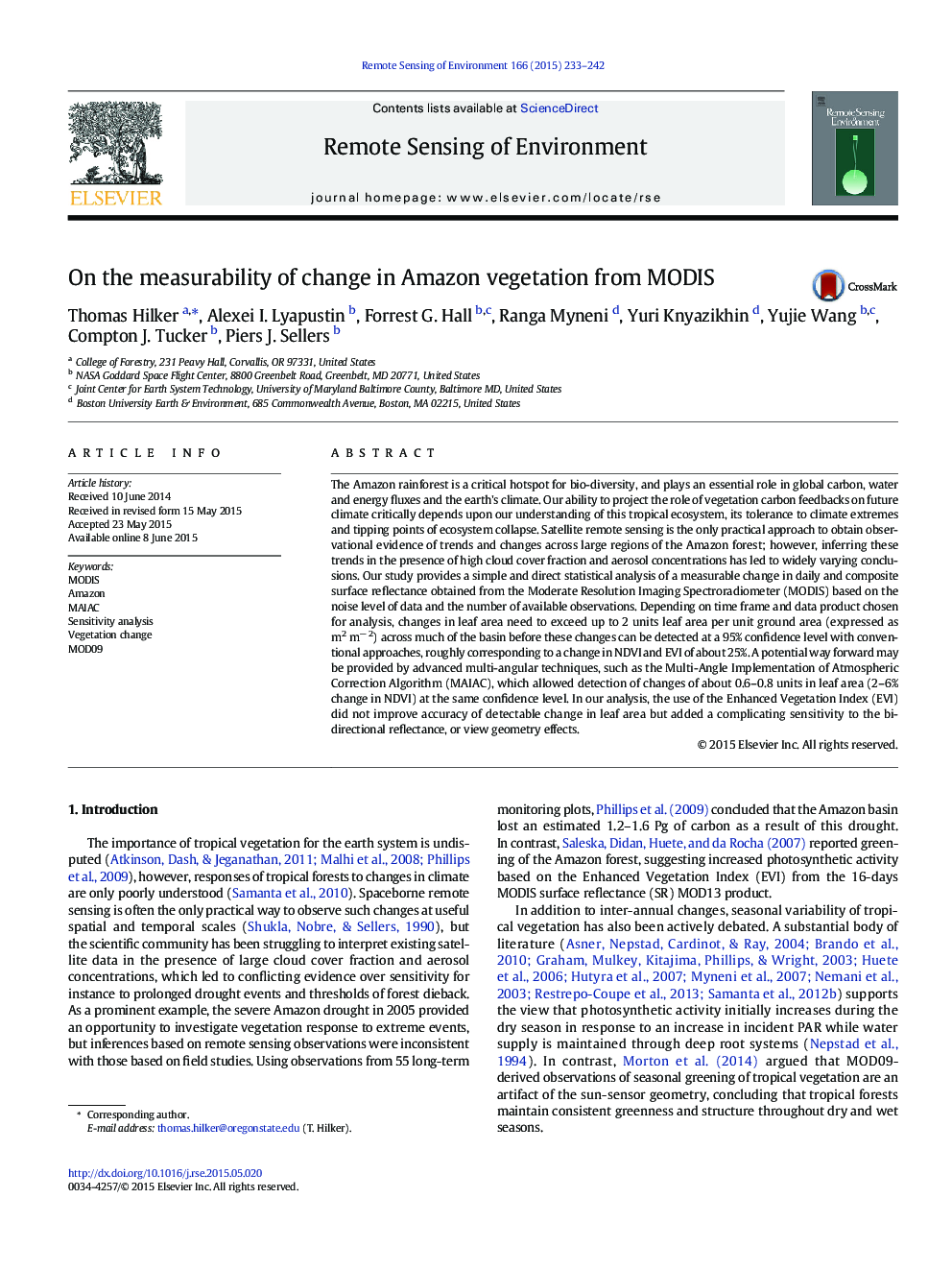| Article ID | Journal | Published Year | Pages | File Type |
|---|---|---|---|---|
| 6345938 | Remote Sensing of Environment | 2015 | 10 Pages |
â¢We analyze ability to detect change in tropical vegetation with MODIS time series.â¢Changes in daily MODIS reflectance had to exceed 20% NDVI or 2 LAI units to be significant.â¢With compositing and new MAIAC correction, this was reduced to 0.6-0.8 LAI.â¢When using EVI, directional effects are important to be considered.
The Amazon rainforest is a critical hotspot for bio-diversity, and plays an essential role in global carbon, water and energy fluxes and the earth's climate. Our ability to project the role of vegetation carbon feedbacks on future climate critically depends upon our understanding of this tropical ecosystem, its tolerance to climate extremes and tipping points of ecosystem collapse. Satellite remote sensing is the only practical approach to obtain observational evidence of trends and changes across large regions of the Amazon forest; however, inferring these trends in the presence of high cloud cover fraction and aerosol concentrations has led to widely varying conclusions. Our study provides a simple and direct statistical analysis of a measurable change in daily and composite surface reflectance obtained from the Moderate Resolution Imaging Spectroradiometer (MODIS) based on the noise level of data and the number of available observations. Depending on time frame and data product chosen for analysis, changes in leaf area need to exceed up to 2 units leaf area per unit ground area (expressed as m2 mâ 2) across much of the basin before these changes can be detected at a 95% confidence level with conventional approaches, roughly corresponding to a change in NDVI and EVI of about 25%. A potential way forward may be provided by advanced multi-angular techniques, such as the Multi-Angle Implementation of Atmospheric Correction Algorithm (MAIAC), which allowed detection of changes of about 0.6-0.8 units in leaf area (2-6% change in NDVI) at the same confidence level. In our analysis, the use of the Enhanced Vegetation Index (EVI) did not improve accuracy of detectable change in leaf area but added a complicating sensitivity to the bi-directional reflectance, or view geometry effects.
